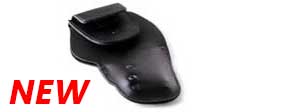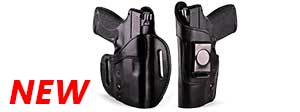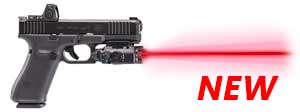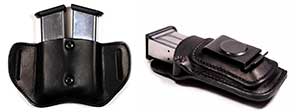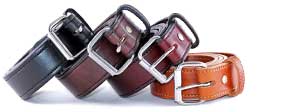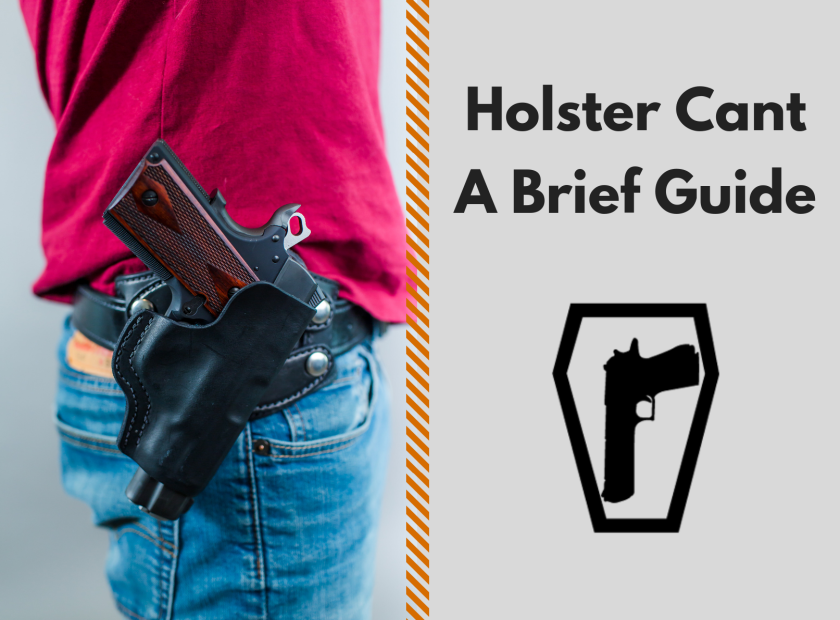I Cant Even: A Brief Guide to Holster Cant
What is Holster Cant?
Holster cant is the angle at which the gun ride in the holster. A gun that is carried vertically in the holster has zero degree of cant and is in a neutral or "straight-drop" position. Forward or positive cant would have the gun carried with a tilt forward, such as the FBI cant. An FBI cant is usually between 10 or 20 degrees, most commonly 15 degrees forward. A negative or reverse cant would mean that the gun is tilted back from a neutral position, such as in a cross draw holster.
Holster Cant & Angles: What You Need To Know
Anyone that carries on a daily basis can attest to the fact that it takes a while to find the right holster setup. It’s so easy to be overwhelmed with holsters; there’s kydex, leather, hybrids, and nylon. And then there’s the holsters position on your body.
Arguably, one of the most confusing and least understood aspects is cant, which is the angle that the gun rides at in the holster. Just like with the different types of holsters and positions, most people are particular about their cant.
Types of Cant
Imagine a gun in a holster sticking straight up and down: that’s neutral, or vertical, cant. Lean it slightly toward the right, and you have forward cant. Slightly to the left, and that’s negative cant.
Each type of cant has its pros and cons, but most are location specific. The easiest way to picture where a specific cant will work is that as the holster moves clockwise from the hip, the holster cants forward. And likewise, as it moves counterclockwise from the hip, it cants rearward for cross draw and appendix style.
Neutral Cant
Neutral, or vertical cant is most common in OWB and open carry applications, usually for those carrying full size duty guns. This configuration works best when placed on the side of your hip, and provides a more natural draw as it is inline with your arm and shoulder. A vertical cant is not ideal for concealed carry as it can cause the gun to print more than other configurations due to the way the gun rides on the hip.
Forward Cant
Carrying a firearm near the four o’clock or kidney position is better suited for a forward cant. The most well known forward cant is the FBI cant, which places the holster at a 15-20 degree angle. This style gets its name from the FBI, which instructed agents at the academy that this was the most effective holster setup.
By moving the holster a little further back on the belt line, the wearer is better able to conceal a firearm. The downside, of course, is that the neutral cant is no longer a natural draw and may not be as efficient. By using a forward cant, it’s easier to draw the firearm in a more natural sweep when carried in the 4 o’clock position.
Negative Cant
So what if you wanted to cross draw or appendix carry? Obviously a forward cant wouldn’t really help matters, and a neutral cant would be too awkward. Cue the negative cant. By tipping the pistol backwards, it makes drawing in front of the hip much easier. Think about it, the pistol grip always wants to point at your hip. The negative cant allows easy access for the carrier, and in many ways aids in concealment.
What about the other types of carry? Say you want to be like James Bond with a shoulder rig, or keep things low key with an ankle rig. Both are great options for concealed carry, but both require a different style of cant.
Shoulder Holster & Cant
Let’s start with shoulder holsters. First off, they need to be properly fitted, meaning the gun should be up near your armpit and not by your lower rib cage. Likewise, the shoulder rig should be properly anchored down with snaps or clips if applicable.
The next consideration is the type and size of firearm you choose to carry. Smaller guns, such as a J-Frame revolver or S&W Shield, can be carried horizontally, meaning the slide of the gun is basically in your armpit and the grip is facing your front. This is perfect for drawing while standing, however you may want to tip the muzzle down slightly if you spend most of your day in the seated position.
The slight cant makes for an easier draw while seated. Larger guns, such as a full size 1911 or a large frame revolver should be carried vertically. This position places the muzzle towards the floor, and allows your torso to hide the length of the larger slides/barrels.
Ankle Holsters
Ankle rigs are another beast altogether. This method of concealed carry affords the wearer a stealthy way to holster the gun without being too noticeable. That being said, ankle holsters are really only meant for smaller, pocket size guns and not something the size of the Glock 19.
The cant of an ankle holster is a compromise between ease of draw and how concealed the firearm needs to be. A neutral cant provides a much smoother draw whether seated or bending over, while a forward cant helps the gun hug the shape of your leg and blend in more easily. With either cant style, a good pair of pants is needed to fully conceal the firearm of your choosing.
A Real SOB
This last one is one of the more controversial holstering options, but we aren’t here to talk about that. Carrying Small of Back, or SOB, has it’s own set of rules for concealed carry cants. The most traditional cants are neutral, horizontal, and negative.
The horizontal cant places the gun upside down, with the grip facing your strong side. This allows a quicker draw than the neutral cant, and runs along your belt line instead of the spine.
The last one is a negative cant, done by using a weak hand IWB holster and placing it at the base of your spine. This allows for the wearer to get a firm grip on the firearm and have the gun angled at a more ergonomical cant.
The Decision Is Yours
There are about as many different cant and position set ups as there are concealed carry permit holders. The only way to really figure out which is best for you is to try them out, and work with different setups during training.
Which carry position and cant do you prefer? Let us know in the comments! If you know someone who would benefit from this article, share it with them on Facebook!

